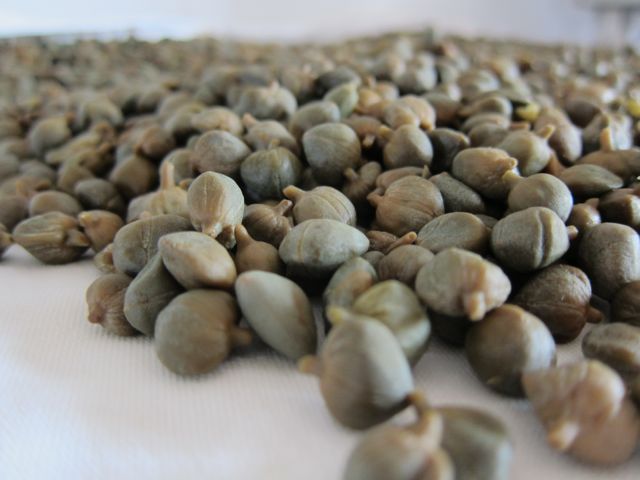
One of the best parts about going to Pantelleria last week was learning all about capers. It was basically Capers 101. Or Capers for Dummies. Take your pick. Either way, it was capers 24/7.
Although I use capers all the time, and thought I knew pretty much how they grow, even I ended up learning a lot.
Which I’m very happy to share with you.
Did you know that capers from Pantelleria are the only capers in Italy to have an I.G.P. (protected geographic denomination)? While capers have always been grown in Pantelleria, the 80’s were the real boom years. But when cheaper imports from Africa began to flood the market, local farmers ripped out their caper fields and began planting grapes instead.
Flash forward to today, when the quality of the capers from Pantelleria have been widely recognized and farmers have begun planting fields of the plants again. What makes the capers from Pantelleria so different is actually the soil they grow in. Pantelleria is a volcanic island, and the chemical and mineral balance of the soil results in higher levels of glucos caperina ( I didn’t make that up.) What that really means is a tastier, and slightly sweeter, variety of caper.
And yes, I said fields of capers. And this was the biggest revelation to me. I had always seen capers hanging on for dear life on old stone walls. They seem to thrive in hostile environments and sink their roots into the crevices between rocks in the oddest places. And they do grow all over the island, in the nooks and crannies of the ancient stone walls that form the cultivated terraces up and down the hills.
But in Pantelleria they also plant them in rows, in fields, in the ground, in the dirt. While this makes them marginally easier to harvest, it’s still back breaking work. The plants stretch out their runners along the red earth and begin to bud in May and continue to do so until August and the beginning of September. The capers that are harvested are actually the buds of flowers, so the plants are continuously harvested, every few days, with the little buds nipped off by hand, before a flower has a chance to form.
As long as the buds are picked, the plant continues to produce.
If the incredibly beautiful flower is left on the plant, then it turns into the much larger caper berry, or fruit. These have become very trendy lately but evidently it’s very hard to convince the local farmers to let their plants produce them. In Pantelleria if your caper plant has flowers, your reputation suffers. In other words, only a bad, lazy farmer would let his caper plant flower in full season. Too bad, since the few caper berries that were left to form were huge and looked wonderful.
Once they are picked, the raw, bright green capers are placed under salt for about 25 days. This allows lactic fermentation to take place, after which the now dark green caper can pretty much last for as long as you’d like. The little buds are constantly watched during this time, stirred and adjusted for salt so that the fermentation is just right. This is either done by the farmer himself, or else taken to a local capperificio to be salted, processed and stored.
Once cured, they are sorted into various sizes. I visited Bonomo & Giglio, which is one of the larger capperifici on the island. They even had a special machine that automatically sorted the capers into small, medium and large.
Small ones are the most prized, since they retain their firmness. They are the ones that get thrown in dishes at the last second to provide that caper zing, as well as a bit of crunch. The bigger capers are softer, since they have begun the process of turning into a flower. They get put into various sauces or pureed into pates.
What do you do with capers? In Pantelleria they go into just about everything, and I’ll be reporting back in with recipes later on in the week. (here’s a Greek recipe)
But for now, I just want to tell you that my very favorite thing I put in my mouth during the entire trip was a new product that we tasted at La Nicchia. Capperi Crocconti. Crispy Capers.
It’s everything you love about capers (and who doesn’t love capers) but crunchy. They’ve taken preserved capers and then dried them. The result? Healthy, vegetarian bacon bits. Or something like that.
I couldn’t stop eating them.
They also grind them up and make Caper Dust.
Don’t you want to sprinkle it on everything?
Anyway, you heard it here. Crunchy Capers are gonna be the new ‘it’ ingredient.
So don’t be surprised if you see them showing up on the next designer hipster pizza you order in Brooklyn or Portland.
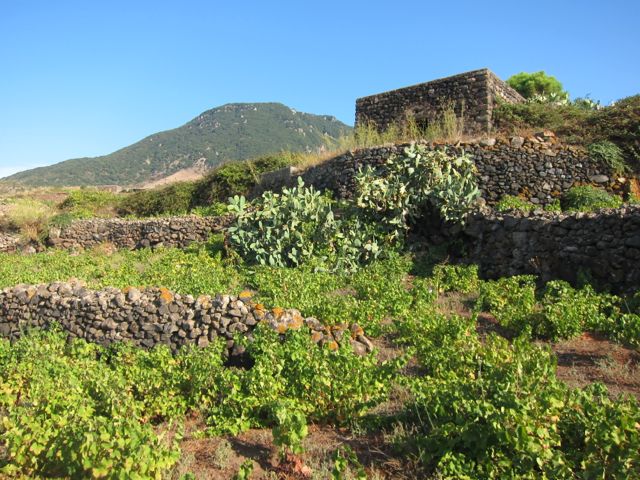
I tried a lot of products from La Nicchia and loved them all. . And Gustiamo in the States carries their capers. The dried capers are so new, no one has them yet. But I’m sure if you contact La Nicchia you can get your hands on some (yes, I’m talking to you hipster pizza maker in Dumbo). I was also traveling with folks from Zingermans and Formaggio Kitchen, so here’s keeping your fingers crossed they show up there.
I was in Pantelleria as a participant in a learning symposium organized by Oldways, and sponsored by the Italian Ministry of Agriculture, Sicilian Region; The Agriculture Department, Comune di Pantelleria and Fausto Luchetti.
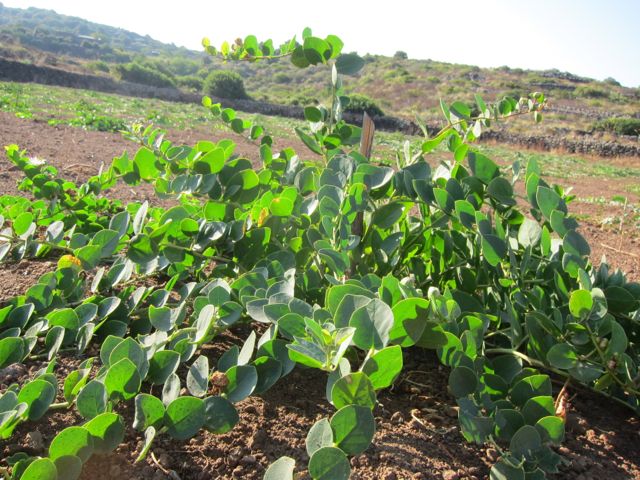
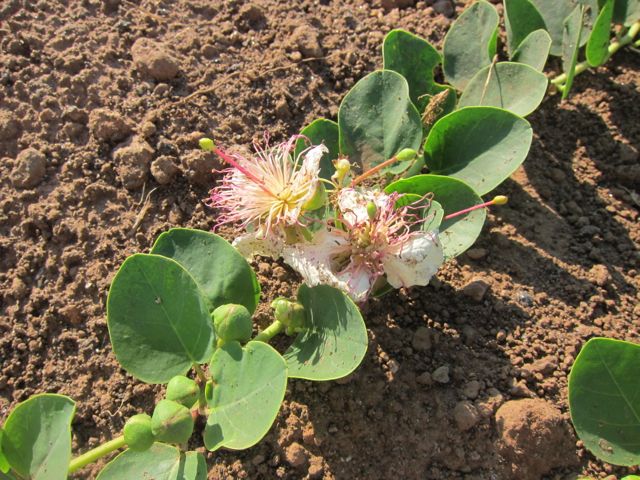
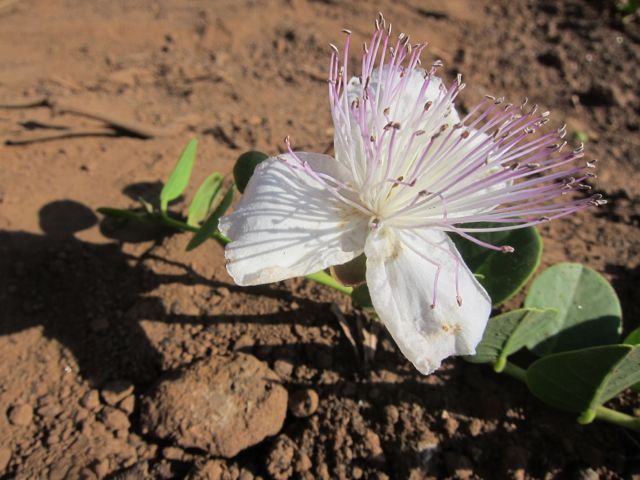
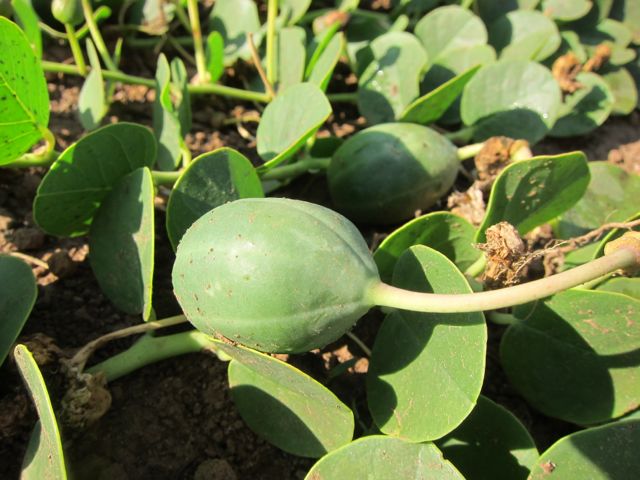
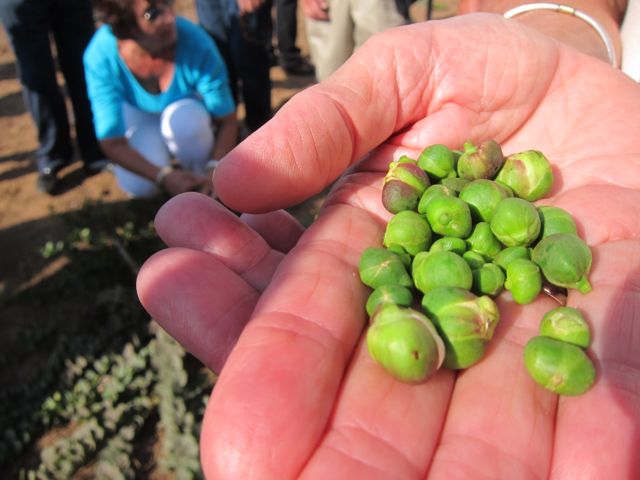
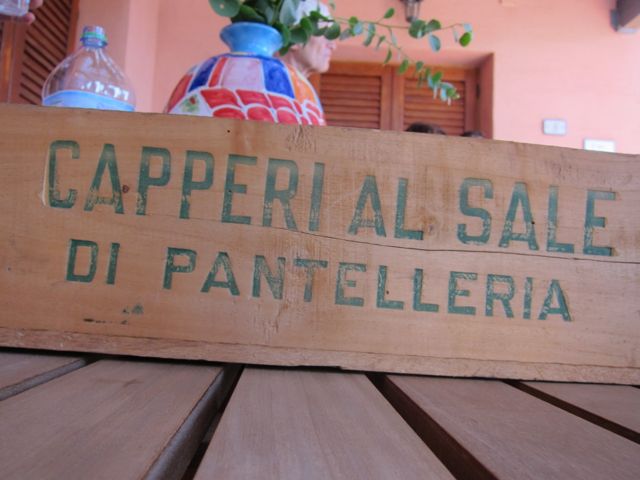
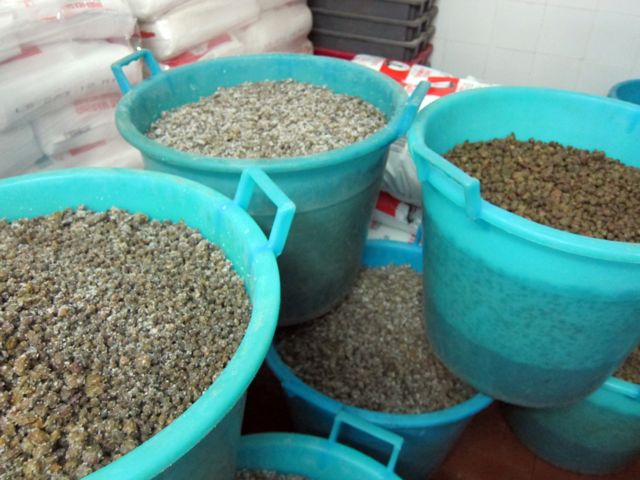
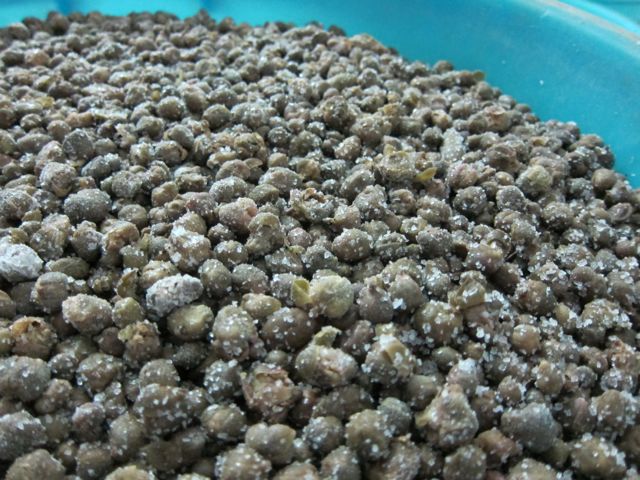
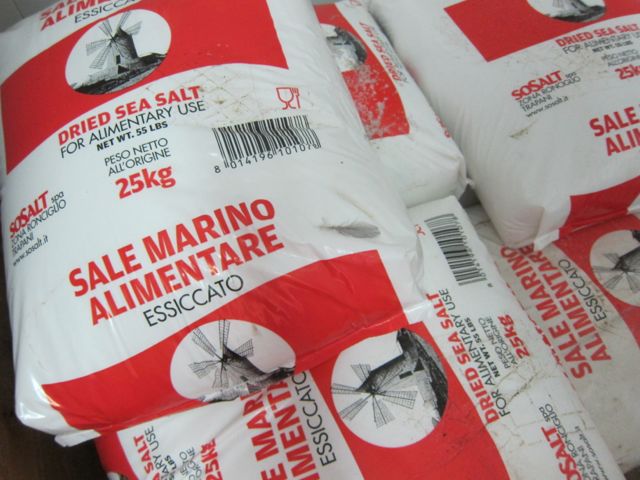
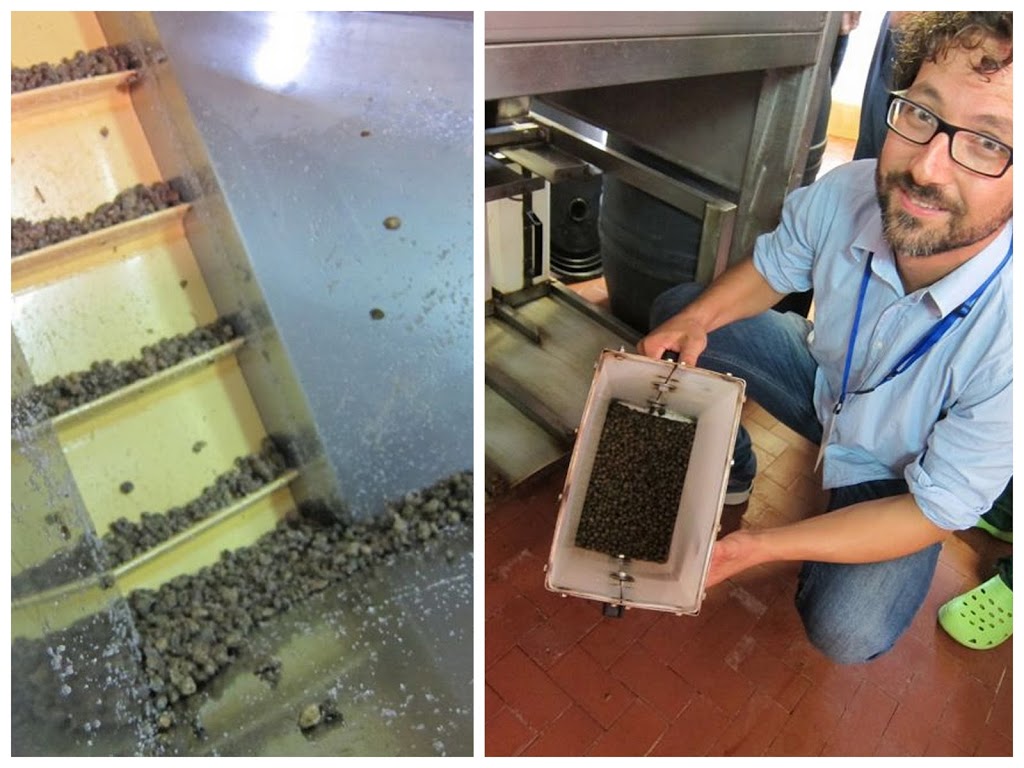
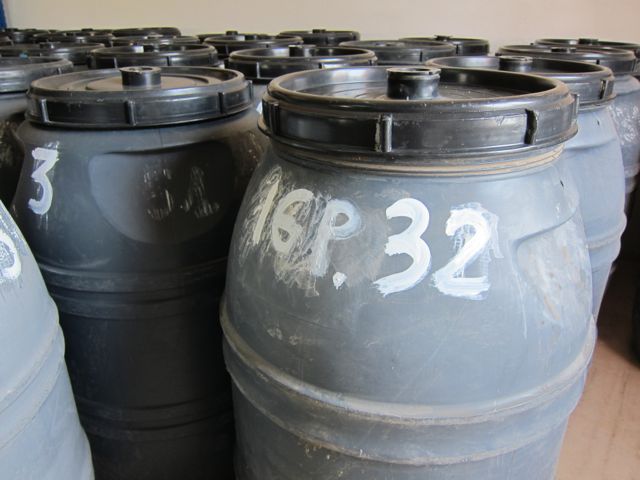
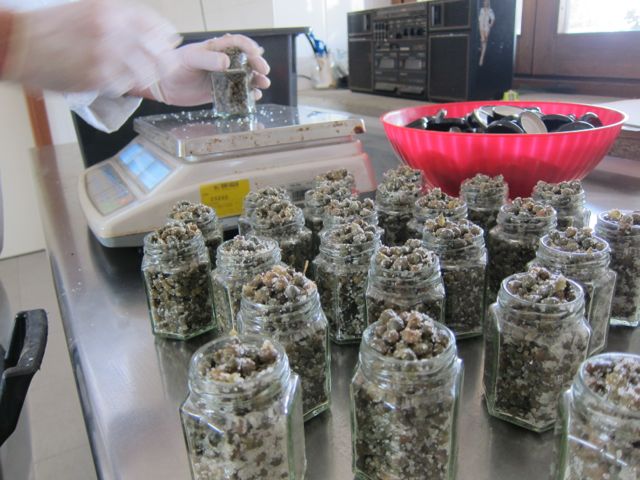
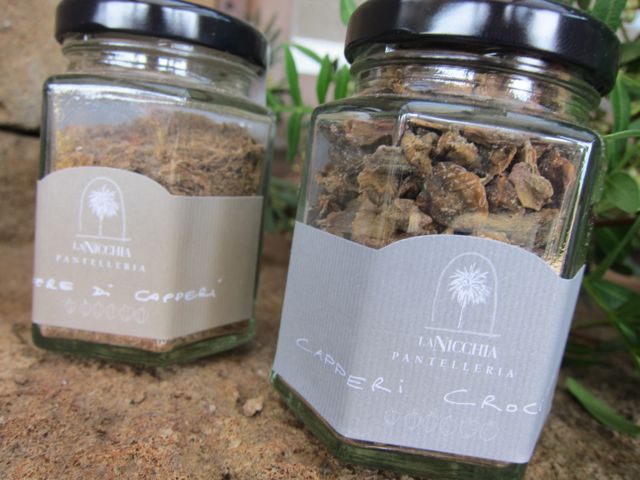
Hopefully everyone in your family will get some capers the next time you come to visit…..hint hint
Hi Elizabeth! What a lovely blog you have, with some gorgeous photos. I’m now following you! 🙂
I’m over at sunshineandtomatoes.blogspot.it, where I write about all things southern Italian (including, like on your blog, lots of food!) I hope you’ll stop by sometime 🙂
Buona giornata, Amy
Thank you Elizabeth-great post. I recently bought some fresh capers at my local farmers’ market from a charming Sicilian man and he told me how to cure them. I would love to get my hands on the dried capers-hopefully Zinergmans will have them soon!
Great story! I brought my mom a half-kilo bag of capers from Lipari, also good and much better than the usual sad jar of capers in vinegar from the local US grocery store.
I love the article and great photos! I posted it on my Italy Hotline Facebook page since I am sure a lot of people know nothing about this lovely little gem. I am very much looking forward to trying Capperi Croccanti!
I always enjoy your posts but as a fellow caper lover this was just so close to my heart. The flower photo is amazing! I never really thought about the plant much. Sadly now, my giant jar of capers from Costco will never be quite good enough. I MUST have those dried berries!
Excellent post – who knew there was so much to learn about capers. It really makes me appreciate what goes into that tasty little package! Thanks for enlightening us.
“So don’t be surprised if you see them showing up on the next designer hipster pizza you order in Brooklyn or Portland.”
Could be soon here in Portland. I’ve been importing capers from Pantelleria for a few years; Beard finalist Cathy Whims uses them at her restaurant, Nostrana, along with another amazing Pantescan product, oregano.
I could totally nibble on those dried ones!
Goodness, I just had NO IDEA capers grew this way — I thought they were the bud of the nasturtium flower, but perhaps that’s another kind. These look much more spectacular. Thank you for the visual lesson! I feel fortified this morning.
I am growing 2 caper bushes here in Arizona. Just getting my first ones after a two year wait. But I need to know more about how to continue. Should the bushes be cut back? Should they be fertilized? The photos I have seen from Greece, and Italy show many small, neatly timed bushes, mine are starting to spread out. I thought they were only supposed to be about 2-2 1/2 feet. Information is quite limited. Can you point out a book of instructions for me? I am very pleased with my first crop.
That’s great that you are growing capers in Arizona! I’m sorry, but since I’ve never been so lucky, I’ve never had to take care of them. I”m not sure they grow that large? I’ve seen them in Rome, producing capers, growing on the sides of walls, untended. But the ones I see in Sicily, in the ground, are obviously pruned, but I don’t know how. Have you searched online?
Hi there Janet, I’m a small grower in Phoenix, and sell caper starts to the local nurseries. If you purchased caper plants in AZ, it is probable that I started them. We have a Facebook group called “Low Desert Caper Growers” you are welcome to join. We have been growing capers here for about four years and still have much to learn, but with horticulturists from The Desert Botanical Garden, The Phoenix Zoo and the local Master Gardeners, plus many expert home gardeners helping out we are finding our way and happy to help others. Here is a link: https://www.facebook.com/groups/1630193597228778/
Cheers, Suzanne
Thanks Suzanne! All very useful information!!
I have searched online, and will continue, for I find something new each time. Because of the long drought here in the western U.S., I have heard that California is considering growing capers because they require so little water after the first two years. I had very large capers when I was in Rome 6 years ago. Marvelous! They were about the size of a small plum, and were served to us at an open-air café where we enjoyed a light lunch. I was familiar with capers, but was pleasantly surprised when the waiter told us what they were. And now your blog says to let them bloom and then a larger caper will grow. Now I will try that. I bought my caper bushes from a nursery in San Diego, and have enjoyed the two years while waiting for my first crop.
Well, in fact, that makes sense. I think that the capers are treated differently depending on various climatic factors: drought, wind, etc. Those were actually caper berries you had, not capers. Slightly different. Sounds like you may just have to make a trip to Pantelleria or Salina to see how capers are grown first hand!!